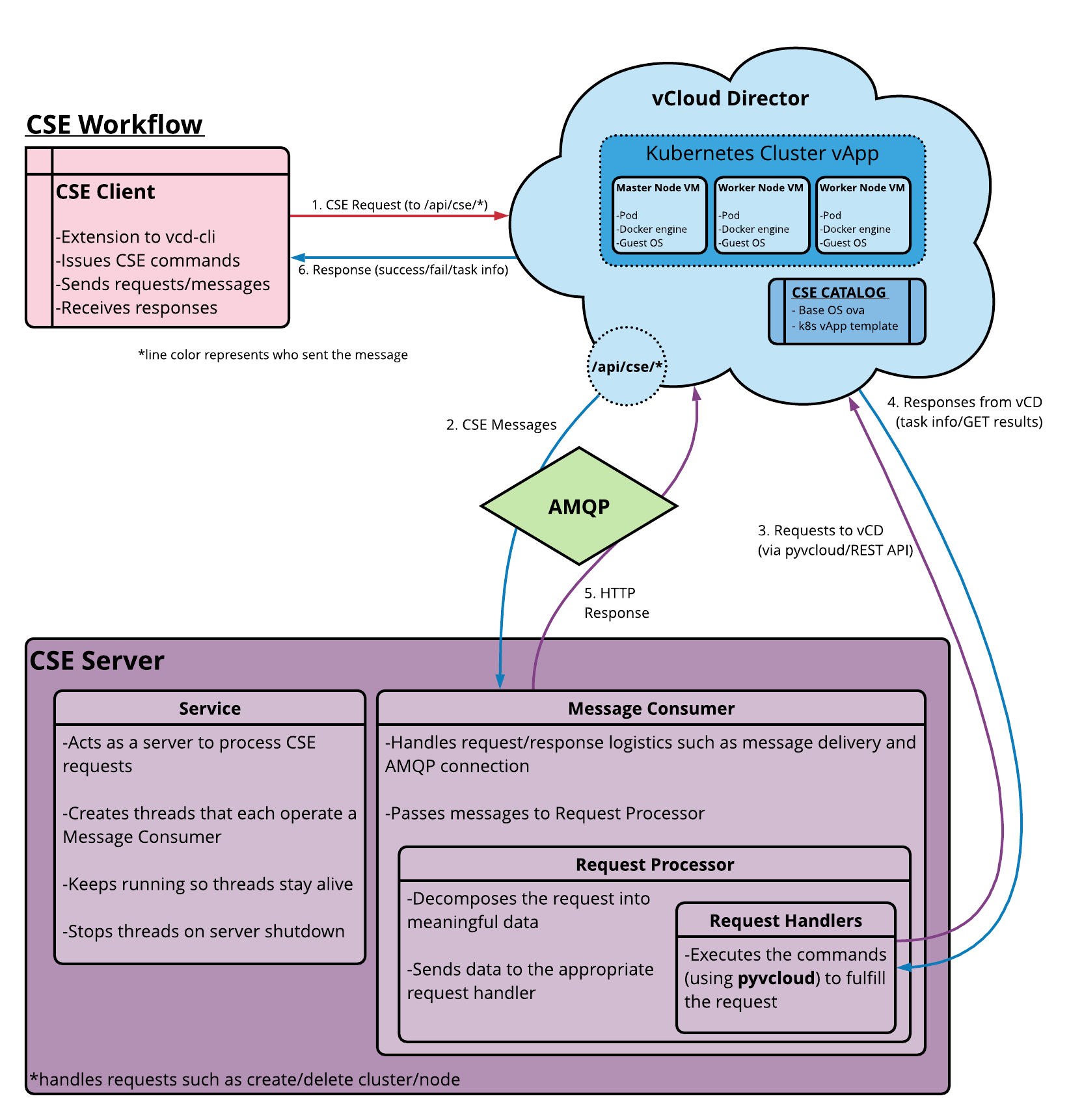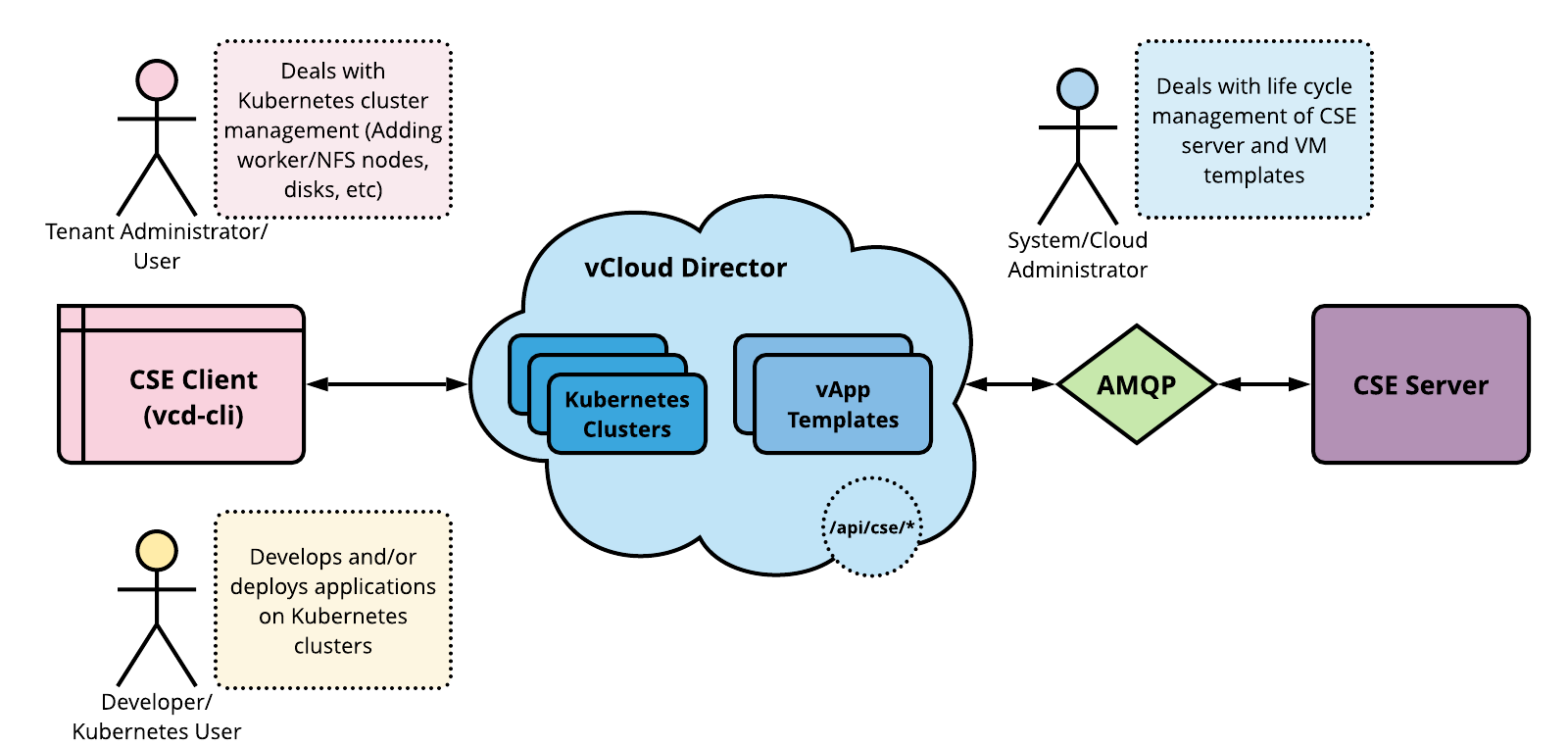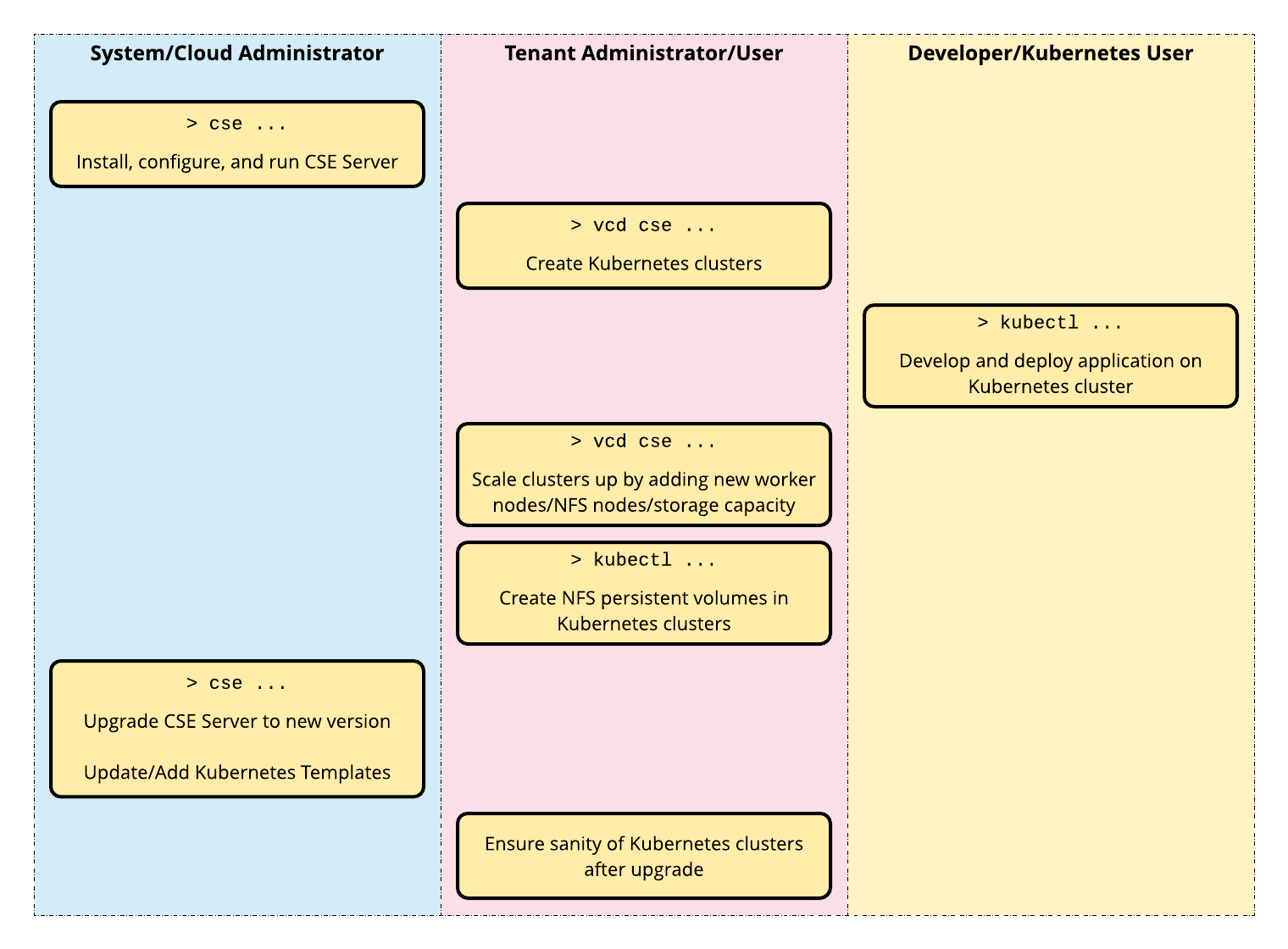Introduction
Overview
Container Service Extension (CSE) is a VMware vCloud Director (VCD) extension that helps tenants create and work with Kubernetes clusters.
CSE brings Kubernetes as a Service to VCD, by creating customized VM templates (Kubernetes templates) and enabling tenant users to deploy fully functional Kubernetes clusters as self-contained vApps.
How CSE Works
CSE has a server component that installs as a VCD extension. It exposes REST
API endpoint points via VCD. CSE also has a client component that plugs in
vcd-cli, communicates with the CSE server via the exposed API endpoints, and
facilitates VCD users to create Kubernetes clusters in VCD. The following
diagram illustrates the interactions between the components.

CSE User Types
Cloud administrators handle setting up VCD, CSE config
file, CSE Server, and Kubernetes templates. Cloud administrators are expected to
posses sysadmin privileges and as well as experience in VCD administration.
Once CSE Server is running and Kubernetes templates are available, tenant
organization administrators and users can use CSE client (vcd-cli)
to handle Kubernetes cluster management. This includes deploying
clusters, adding worker nodes, configuring NFS storage, and the
like.
Tenant users who manage Kubernetes clusters are expected to understand VCD org administration principles. They should have accounts with privileges required to create vApps and manage them. Finally, such users should understand Kubernetes cluster management including setting up user access and defining persistent volumes.
Developers and other Kubernetes users interact with CSE Kubernetes
clusters using kubectl For these users, Kubernetes clusters
work like any other Kubernetes cluster implementation. No special
knowledge of vCloud Director or CSE administration is required.
Such users do not even need a vCloud Director account.

